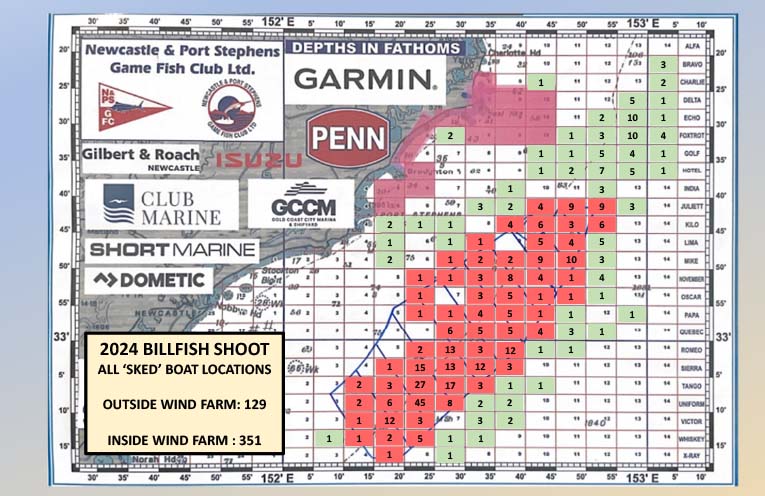
WHILE industry is moving full steam ahead with plans for offshore wind development off Port Stephens, the local fishing community still hold grave concerns over the suitability of the location.
The recent Newcastle and Port Stephens Game Fish Club (NPSGFC) Garmin Billfish Shootout, an annual fishing contest held off the coast in areas potentially impacted by future offshore wind development, brought the issue into focus once more.
The Shootout is the biggest billfish fishing competition in the Southern Hemisphere.
According to the NPSGFC, 85 percent of the fish tagged in this year’s competition were found in the proposed wind farm zone.
The Game Fish Club’s President, Troy Radford, said the location of the Hunter offshore wind zone, which starts about 20 kilometres out to sea from the Port Stephens coast, does not “pass the pub test”.
“If this was going on in the Great Barrier Reef would this be going on?
“If the development would not pass the pub test on the Great Barrier Reef, what makes you think you can get away with doing it here?
“This marine environment is just as important as the Great Barrier Reef,” he said.
The NPSGFC have staunchly opposed the development of offshore wind since it was first touted early last year, citing concerns over the environmental impacts and effects on commercial and recreational fishing and the tourism industry, including access issues if turbines are constructed.
The Federal Government has maintained that all users of the zone will be considered before any final decisions are made on offshore wind development.
“It’s our priority to manage the offshore marine environment in a way that recognises all users and balances competing interests,” the Department of Climate Change, Energy, the Environment and Water says.
“Understanding existing users and interests in and near potential offshore wind areas is important.
“There are consultation opportunities to consider the views of existing offshore industries and ensure that any new offshore wind development can co-exist alongside other industries, such as fisheries, tourism and shipping.”
Those opposing the placement of the offshore wind zone also note the area is part of Australia’s Great Southern Reef, a system of interconnected reefs described as having “profound ecological, cultural, and economic significance”.
“Ecologically, it is a global biodiversity hotspot hosting a wide array of species, including a high percentage being unique to the region,” according to Australia’s Great Southern Reef Foundation.
“The Great Southern Reef supports important fisheries,tourism and recreation activity, contributing at least $10 billion annually to the Australian economy.
“It also plays a vital role in coastal protection, nutrient cycling, and carbon sequestration, supporting the livelihoods and well-being of millions of Australians.”
A recent community meeting at the Port Stephens Yacht Club delved into the process that proponents need to undertake to develop a project in the Hunter offshore wind zone, with a focus on the impacts of recreational and commercial vessel activity.
However some in the room were disappointed in the lack of information provided around the environmental impact that wind farms could cause.
A local whale watch operator in attendance questioned the safety of locating hundreds of turbines off the Port of Newcastle, highlighting risks in adverse weather and referencing the famous Pasha Bulka incident of 2007 when a storm stranded a 76,000-tonne bulk carrier off Newcastle’s Nobbys Beach.
By Marian SAMPSON

